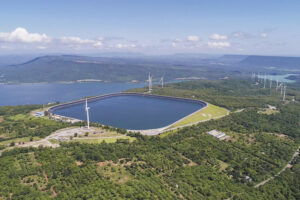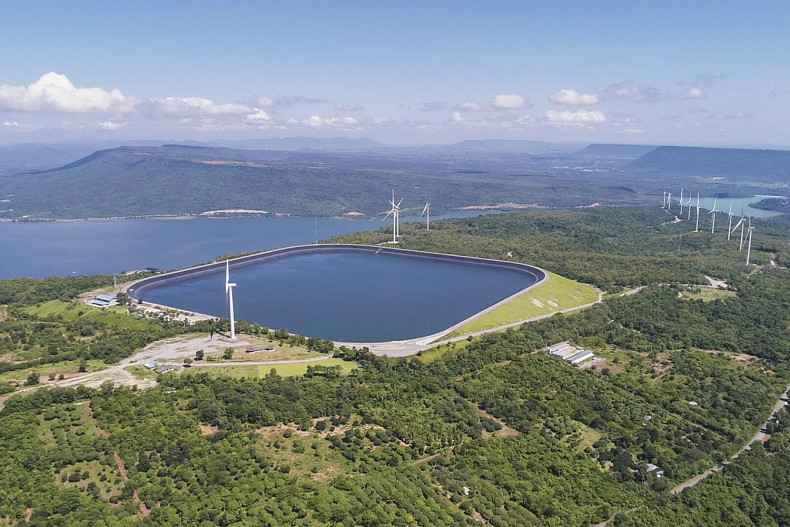
Egat aims to turn Thailand’s hydropower dams into giant ‘batteries’
Three more hydropower dams operated by the Electricity Generating Authority of Thailand (Egat) will be developed into giant “batteries” under a 90-billion-baht investment to supply clean power to the country, easing concerns about insufficient electricity generated by solar and wind power.
Egat is conducting a feasibility study at the dams, aiming to adopt a pumped storage hydropower (PSH) system for hydroelectric energy storage, said Tawatchai Sumranwanich, deputy governor of Egat.
Under PSH, two reservoirs are located at different elevations. When water is discharged from an upper reservoir, it passes through a turbine, generating electricity.
The water is kept in the lower reservoir and pumped back to the upper one to produce electricity again.
The hydroelectric energy storage can serve as a battery, generating electricity immediately when needed.
Water is pumped back to the upper reservoir when the country does not need electricity supply. When power demand increases, water can be discharged to generate electricity, he said.
“This means we can produce clean electricity when power supply from solar and wind farms drops,” said Mr Tawatchai.
“Power generation costs are also low, standing at two baht per kilowatt-hour.”
The sun and wind tend to offer an intermittent supply of power, with volume determined by weather patterns.
The three dams under the PSH project are Chulabhorn dam in Chaiyaphum, with power generation capacity of 801 megawatts, Vajiralongkorn dam in Kanchanaburi, with capacity of 891MW, and Kathun dam in Nakhon Si Thammarat, with capacity of 780MW.
The facilities are scheduled to start commercial operation in 2034, 2036 and 2037, respectively.
The study at Chulabhorn dam is progressing, as authorities submitted an environmental impact assessment (EIA) report to the National Environmental Board, which approved the EIA in April, said Mr Tawatchai.
Once the study at all three dams is complete, the findings will be sent to the Egat board and the Energy Ministry for approval.
If the findings prove that PSH aligns with the 2024 power development plan, which promotes greater use of renewable energy, and promises satisfactory returns, energy officials will seek opinions from other state agencies and forward the PSH project to the cabinet for the final say.
Egat already adopted the PSH technology at its Lamtakong Jolabha Vadhana dam, with capacity of 1,000MW, in the northeastern province of Nakhon Ratchasima.
Source: https://www.bangkokpost.com/business/general/2898406/egat-aims-to-turn-hydropower-dams-into-giant-batteries



